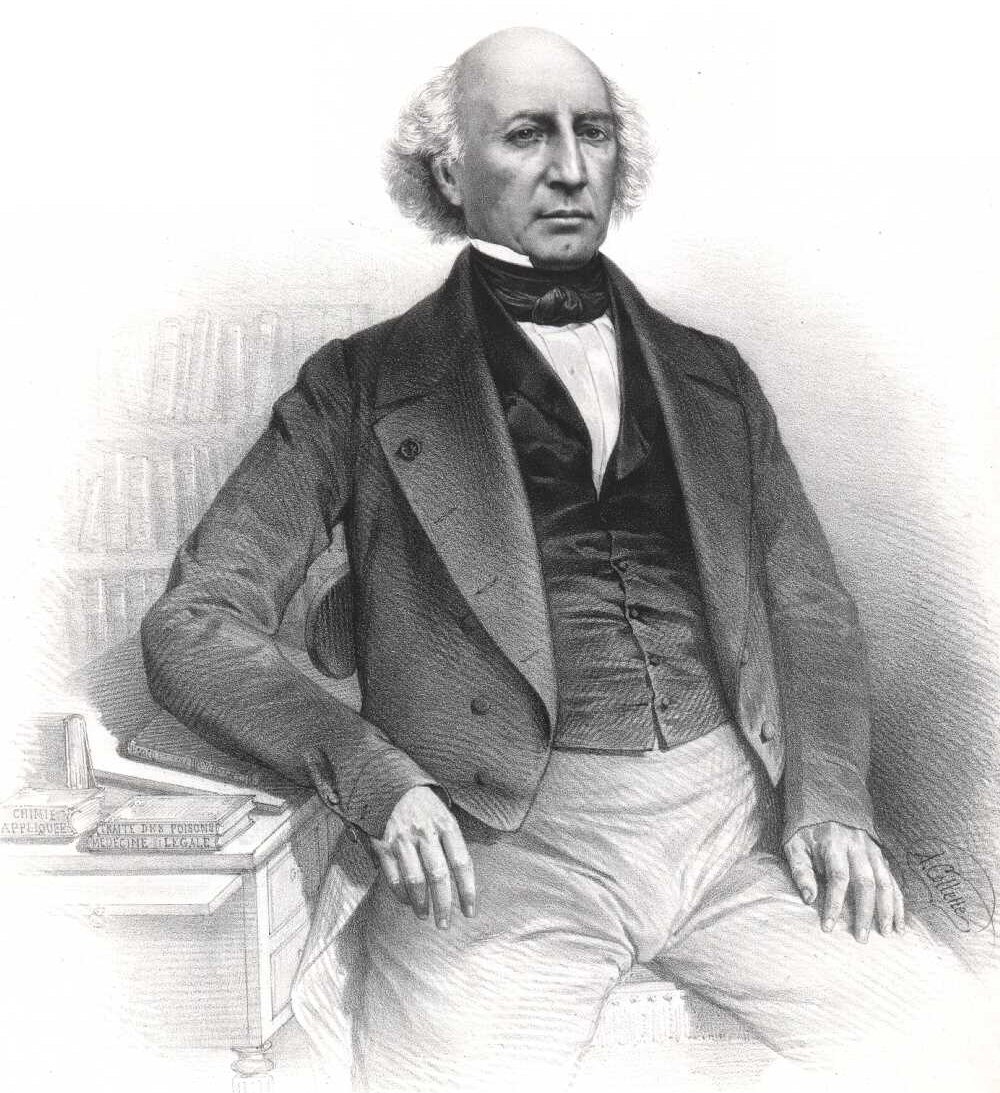|
Methaemoglobinaemia
Methemoglobinemia, or methaemoglobinaemia, is a condition of elevated methemoglobin in the blood. Symptoms may include headache, dizziness, shortness of breath, nausea, poor muscle coordination, and blue-colored skin (cyanosis). Complications may include seizures and heart arrhythmias. Methemoglobinemia can be due to certain medications, chemicals, or food or it can be inherited. Substances involved may include benzocaine, nitrites, or dapsone. The underlying mechanism involves some of the iron in hemoglobin being converted from the ferrous e2+to the ferric e3+form. The diagnosis is often suspected based on symptoms and a low blood oxygen that does not improve with oxygen therapy. Diagnosis is confirmed by a blood gas. Treatment is generally with oxygen therapy and methylene blue. Other treatments may include vitamin C, exchange transfusion, and hyperbaric oxygen therapy. Outcomes are generally good with treatment. Methemoglobinemia is relatively uncommon, with most cases ... [...More Info...] [...Related Items...] OR: [Wikipedia] [Google] [Baidu] |
Methylene Blue
Methylthioninium chloride, commonly called methylene blue, is a salt used as a dye and as a medication. As a medication, it is mainly used to treat methemoglobinemia. It has previously been used for treating cyanide poisoning and urinary tract infections, but this use is no longer recommended. Methylene blue is typically given by injection into a vein. Common side effects include headache, nausea, and vomiting. Methylene blue was first prepared in 1876, by Heinrich Caro. It is on the World Health Organization's List of Essential Medicines. Medical uses Methemoglobinemia Methylene blue is used to treat methemoglobinemia by chemically reducing the ferric iron in hemoglobin to ferrous iron. Methemoglobinemia can arise from ingestion of certain pharmaceuticals, toxins, or broad beans in those susceptible. Specifically, it is used to treat methemoglobin levels that are greater than 30% or in which there are symptoms despite oxygen therapy. Normally, through the NADH- or ... [...More Info...] [...Related Items...] OR: [Wikipedia] [Google] [Baidu] |
Hemoglobin M Disease
Hemoglobin M disease is a rare form of hemoglobinopathy, characterized by the presence of hemoglobin M (HbM) and elevated methemoglobin (metHb) level in blood. HbM is an altered form of hemoglobin (Hb) due to point mutation occurring in globin-encoding genes, mostly involving tyrosine substitution for proximal (F8) or distal (E7) histidine residues. HbM variants are inherited as autosomal Dominance (genetics), dominant disorders and have altered Oxygen–hemoglobin dissociation curve, oxygen affinity. The pathophysiology of hemoglobin M disease involves heme iron autoxidation promoted by heme pocket structural alteration. There exists at least 13 HbM variants, such as Boston, Osaka, Saskatoon, etc., named according to their geographical locations of discovery. Different HbM variants may give different signs and symptoms. Major signs include cyanosis and dark brown blood. Patients may be asymptomatic or experience dizziness, headache, mild dyspnea, etc. Diagnosis is usually suspected ... [...More Info...] [...Related Items...] OR: [Wikipedia] [Google] [Baidu] |
Toxicology
Toxicology is a scientific discipline, overlapping with biology, chemistry, pharmacology, and medicine, that involves the study of the adverse effects of chemical substances on living organisms and the practice of diagnosing and treating exposures to toxins and toxicants. The relationship between dose and its effects on the exposed organism is of high significance in toxicology. Factors that influence chemical toxicity include the dosage, duration of exposure (whether it is acute or chronic), route of exposure, species, age, sex, and environment. Toxicologists are experts on poisons and poisoning. There is a movement for evidence-based toxicology as part of the larger movement towards evidence-based practices. Toxicology is currently contributing to the field of cancer research, since some toxins can be used as drugs for killing tumor cells. One prime example of this is ribosome-inactivating proteins, tested in the treatment of leukemia. The word ''toxicology'' () ... [...More Info...] [...Related Items...] OR: [Wikipedia] [Google] [Baidu] |
Hemoglobin
Hemoglobin (haemoglobin, Hb or Hgb) is a protein containing iron that facilitates the transportation of oxygen in red blood cells. Almost all vertebrates contain hemoglobin, with the sole exception of the fish family Channichthyidae. Hemoglobin in the blood carries oxygen from the respiratory organs (lungs or gills) to the other tissues of the body, where it releases the oxygen to enable aerobic respiration which powers an animal's metabolism. A healthy human has 12to 20grams of hemoglobin in every 100mL of blood. Hemoglobin is a metalloprotein, a chromoprotein, and a globulin. In mammals, hemoglobin makes up about 96% of a red blood cell's dry matter, dry weight (excluding water), and around 35% of the total weight (including water). Hemoglobin has an oxygen-binding capacity of 1.34mL of O2 per gram, which increases the total blood oxygen capacity seventy-fold compared to dissolved oxygen in blood plasma alone. The mammalian hemoglobin molecule can bind and transport up to four ... [...More Info...] [...Related Items...] OR: [Wikipedia] [Google] [Baidu] |
Coma
A coma is a deep state of prolonged unconsciousness in which a person cannot be awakened, fails to Nociception, respond normally to Pain, painful stimuli, light, or sound, lacks a normal Circadian rhythm, sleep-wake cycle and does not initiate voluntary actions. The person may experience respiratory and circulatory problems due to the body's inability to maintain normal bodily functions. People in a coma often require extensive medical care to maintain their health and prevent complications such as pneumonia or blood clots. Coma patients exhibit a complete absence of wakefulness and are unable to consciously feel, speak or move. Comas can be the result of natural causes, or can be Induced coma, medically induced, for example, during General anaesthesia, general anesthesia. Clinically, a coma can be defined as the consistent inability to follow a one-step command. For a patient to maintain consciousness, the components of ''wakefulness'' and ''awareness'' must be maintained. Wak ... [...More Info...] [...Related Items...] OR: [Wikipedia] [Google] [Baidu] |
Seizure
A seizure is a sudden, brief disruption of brain activity caused by abnormal, excessive, or synchronous neuronal firing. Depending on the regions of the brain involved, seizures can lead to changes in movement, sensation, behavior, awareness, or consciousness. Symptoms vary widely. Some seizures involve subtle changes, such as brief lapses in attention or awareness (as seen in absence seizures), while others cause generalized convulsions with loss of consciousness ( tonic–clonic seizures). Most seizures last less than two minutes and are followed by a postictal period of confusion, fatigue, or other symptoms. A seizure lasting longer than five minutes is a medical emergency known as status epilepticus. Seizures are classified as provoked, when triggered by a known cause such as fever, head trauma, or metabolic imbalance, or unprovoked, when no immediate trigger is identified. Recurrent unprovoked seizures define the neurological condition epilepsy. Clinical features Seizur ... [...More Info...] [...Related Items...] OR: [Wikipedia] [Google] [Baidu] |
Exercise Intolerance
Exercise intolerance is a condition of inability or decreased ability to perform physical exercise at the normally expected level or duration for people of that age, size, sex, and muscle mass. It also includes experiences of unusually severe post-exercise pain, fatigue, nausea, vomiting or other negative effects. Exercise intolerance is not a disease or syndrome in and of itself, but can result from various disorders. In most cases, the specific reason that exercise is not tolerated is of considerable significance when trying to isolate the cause down to a specific disease. Dysfunctions involving the pulmonary, cardiovascular or neuromuscular systems have been frequently found to be associated with exercise intolerance, with behavioural causes also playing a part. Signs and symptoms Exercise in this context means physical activity, not specifically exercise in a fitness program. For example, a person with exercise intolerance after a heart attack may not be able to sustain th ... [...More Info...] [...Related Items...] OR: [Wikipedia] [Google] [Baidu] |
Hyperbaric Oxygen Therapy
Hyperbaric medicine is medical treatment in which an increase in barometric pressure of typically air or oxygen is used. The immediate effects include reducing the size of gas emboli and raising the partial pressures of the gases present. Initial uses were in decompression sickness, and it also effective in certain cases of gas gangrene and carbon monoxide poisoning. There are potential hazards. Injury can occur at pressures as low as 2 psig (13.8 kPa) if a person is rapidly decompressed. If oxygen is used in the hyperbaric therapy, this can increase the fire hazard. Hyperbaric oxygen therapy (HBOT), is the medical use of greater than 99% oxygen at an ambient pressure higher than atmospheric pressure, and therapeutic recompression. The equipment required consists of a pressure vessel for human occupancy (hyperbaric chamber), which may be of rigid or flexible construction, and a means of a controlled atmosphere supply. Treatment gas may be the ambient chamber gas, or delivered v ... [...More Info...] [...Related Items...] OR: [Wikipedia] [Google] [Baidu] |
Exchange Transfusion
An exchange transfusion is a blood transfusion in which the patient's blood or components of it are exchanged with (replaced by) other blood or blood products. The patient's blood is removed and replaced by donated blood or blood components. This exchange transfusion can be performed manually or using a machine (apheresis). Most blood transfusions involve adding blood or blood products without removing any blood; these are also known as simple transfusions or top-up transfusions. Exchange transfusion is used in the treatment of a number of diseases, including sickle-cell disease and hemolytic disease of the newborn. Partial exchange might be required for polycythemia. Nearly all exchange transfusions are allogeneic (that is, the new blood or blood products come from another person or persons, via donated blood); autologous exchange transfusion is possible (using autologous blood banking), but there are not many situations in which a need for it arises, as most autologous transfus ... [...More Info...] [...Related Items...] OR: [Wikipedia] [Google] [Baidu] |
Vitamin C
Vitamin C (also known as ascorbic acid and ascorbate) is a water-soluble vitamin found in citrus and other fruits, berries and vegetables. It is also a generic prescription medication and in some countries is sold as a non-prescription dietary supplement. As a therapy, it is used to prevent and treat scurvy, a disease caused by vitamin C deficiency. Vitamin C is an essential nutrient involved in the repair of tissue, the formation of collagen, and the enzymatic production of certain neurotransmitters. It is required for the functioning of several enzymes and is important for immune system function. It also functions as an antioxidant. Vitamin C may be taken by mouth or by intramuscular, subcutaneous or intravenous injection. Various health claims exist on the basis that moderate vitamin C deficiency increases disease risk, such as for the common cold, cancer or COVID-19. There are also claims of benefits from vitamin C supplementation in excess of the recommended d ... [...More Info...] [...Related Items...] OR: [Wikipedia] [Google] [Baidu] |
Blood Gas
A blood gas test or blood gas analysis tests blood to measure blood gas tension values and blood pH. It also measures the level and base excess of bicarbonate. The source of the blood is reflected in the name of each test; arterial blood gases come from arteries, venous blood gases come from veins and capillary blood gases come from capillaries. The blood gas tension levels of partial pressures can be used as indicators of ventilation, respiration and oxygenation. Analysis of paired arterial and venous specimens can give insights into the aetiology of acidosis in the newborn. Values measured Blood samples for testing are taken from arterial blood by a radial artery puncture, and from venous blood by venipuncture. Samples of capillary blood are taken using a lancet and capillary action. Capillary samples from the earlobe or the fingertip can be used to predict blood pH and the arterial partial pressure of carbon dioxide in the blood. Samples from the earlobe are seen t ... [...More Info...] [...Related Items...] OR: [Wikipedia] [Google] [Baidu] |




